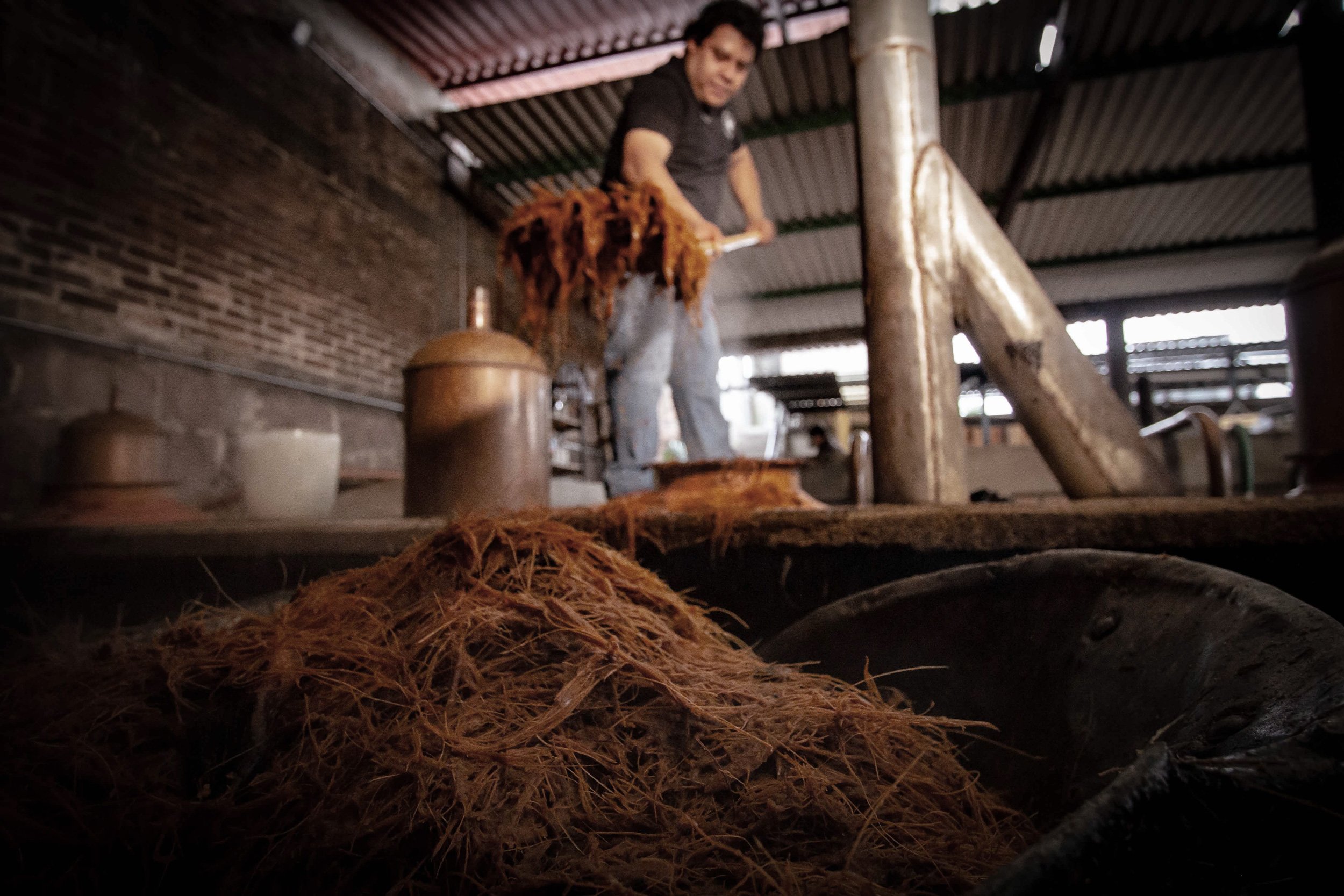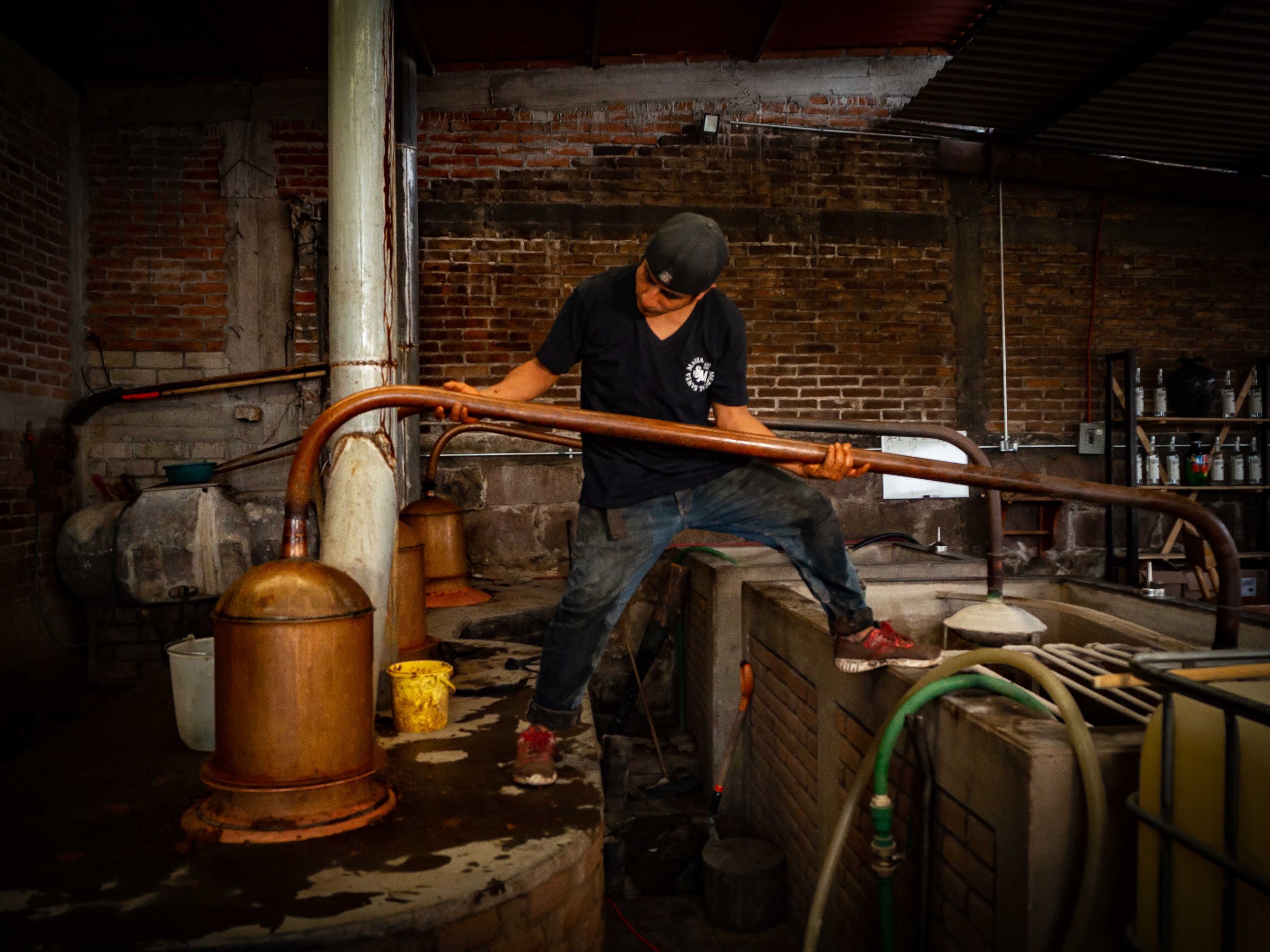
From Field to Bottle
Maestro Mezcalero Kaín carefully oversees the entire production process – from the selection of wild agave to its mystical transformation into superior mezcal.

OUR WILD MEZCALs
The wild agave used to make our wild mezcals dot the Matatlan countryside; from the long-growing Tepeztate found on rugged cliff-sides in the Oaxacan highlands, to the tall and tubular Cuishe, to the wide-leafed Tobala.
Trained jimadors carefully select the wild agave near the end of their natural life cycle, when they are full of agave sugars, soon before they naturally expire.
The jimadors use a coa, or machete, to trim off the spiny agave leaves. If too much is cut off, the mezcal loses flavor. If not enough is taken, the waxy coating on the spines make the mezcal bitter. This is hard work and requires an experienced discerning mezcalero even at this stage of the process.
The Santiago family has historical presence in local mezcal production.
Integral to the Matatlan community, the Santiago family’s busy palenques support a team of jimadors and their families.
Kaín and his team of jimadors hand select and harvest agave on family lands surrounding the palenque as well.
The Santiago family’s longstanding, deep relationships with the jimadors allow them to source the best certified wild agave and cultivated Espadin in Oaxaca.
Not one step substitutes ease over quality and tradition. Our mezcals are created using a traditional, non-mechanized process based on centuries-old traditions and recipes passed from one generation to the next.

ROASTING
In a process that has remained constant for centuries, the piñas roast for days in a mesquite-fed fire.
Jimadors pile ripened piñas high in a massive tapada lined with special river stones. The mound is built very carefully for even roasting. The agaves are then covered by a wet canvas tarp. Sand is mounded over the tarp, sealing in the heat.
The agaves usually roast for two to three days under Kaín’s careful watch, until the softened pulp achieves just the right balance of starch and sugar.
The sweet-smelling smoke envelops the palenque for weeks on end during harvest season.

Sustainable
There is little waste here, as agave leaves that help fuel the fire to roast the piñas and cook the agave mash — bagasso — return to the fields as fertilizer.
The cultivated Espadin agave is continuously replanted for future harvests.

MILLING
Kaín ensures his team extracts every precious drop from the smoky cooked agave pulp.
After roasting, the sweet and smoky pulp is scooped from the roasted piñas. The tahona grinds the cooked agave into the softest mash. The palenque family well, in use for over sixty years, taps into a pristine aquifer below. This pure, clean water is soft, with low minerality, and allows Kaín to draw out the best flavors of the agave so they may express their true nature.

FERMENTATION = ALCHEMY
Some distilleries like to expedite their fermentation. Not us.
Fermentation is everything for Kaín. Using all five of his senses, Kaín tests the humidity, barometric pressure, air temperature, smell from the fermenting vats, and the look and sound as each vat metamorphoses.
Kaín hears the cooked agave whispering.

DISTILLATION
The fermented agave — with fibers, juice, and all — now go into the copper still, the alembic, to begin a double distillation. The first distillate, or común, yields a liquid of around 50 proof. This then undergoes a transformation during the second distillation that becomes like liquid fire of around 150 proof, but which surprisingly retains noticeable and familiar flavors of the end product. The proof is then lowered by blending with the palenque’s pristine well water and mezcal is born.
“I never get tired of saying it over and over, telling them, ‘Cook it over a low flame.’ ”
Tending the fire. Maintaining a constant temperature … muy importante.
